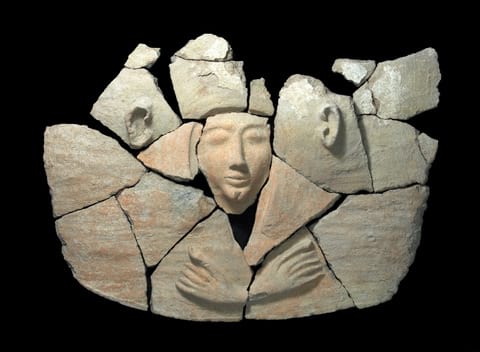Wednesday, April 9, 2014.
A 3,300 Year-Old Coffin was Exposed Containing the Personal Belongings of a Wealthy Canaanite – Possibly an Official of the Egyptian Army.
Among the items discovered – a gold signet ring bearing the name of the Egyptian pharaoh Seti I.
The rare artifacts were uncovered during excavations by the Israel Antiquities Authority near Tel Shadud, prior to the installation of a natural gas pipeline to Ramat Gavriel by the Israel Natural Gas Lines Company.
As part of a project by the Israel Natural Gas Lines Company (INGL) to construct a main pipeline that will convey natural gas to Ramat Gavriel, the Israel Antiquities Authority conducted a salvage excavation prior to the pipeline’s installation. During the course of the work, which was financed by the INGL, a fascinating and exceptional discovery was made.
Part of a burial site dating to the Late Bronze Age (thirteenth century BCE) was exposed in an excavation at the foot of Tel Shadud. According to the excavation directors, Dr. Edwin van den Brink, Dan Kirzner and Dr. Ron Be’eri of the Israel Antiquities Authority, “During the excavation we discovered a unique and rare find: a cylindrical clay coffin with an anthropoidal lid (a cover fashioned in the image of a person) surrounded by a variety of pottery consisting mainly of storage vessels for food, tableware, cultic vessels and animal bones. As was the custom, it seems these were used as offerings for the gods, and were also meant to provide the dead with sustenance in the afterlife.”
Read more >
contact us

